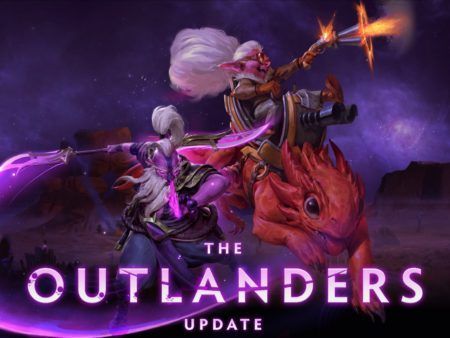The ONE Esports Dota 2 Singapore World Pro Invitational is the first Dota 2 tournament to be played on the latest 7.23e patch.
As this patch is expected to be the prevalent patch heading into the second Major cycle of the 2019-2020 Dota Pro Circuit (DPC) season, the tournament gives us our first look at the emerging meta.
With the conclusion of the Group Stage, we can now see how the meta has developed so far.
General meta analysis
The biggest change of 7.23e was the removal of XP talents for a number of heroes. The change was expected to lead to longer games with teams taking longer to hit their power spikes compared to before.
The statistics from the Group Stage are trending towards expectations, as the average duration for matches was around 36 minutes. For comparison, the average match duration for the DreamLeague Leipzig Major Qualifiers was just under 34 minutes.
While a decrease of 2 minutes in average match duration doesn’t look like much, it must be noted that most teams in the event were still playing with the same up-tempo style that was prevalent during the previous patch.
Most games were decided during the 25-30 minute period in the midgame, with teams utilizing power spikes for their lineups granted by level 15 talents and Tier-2 and 3 neutral items to force fights and take objectives.
Interestingly enough, the new patch saw a dramatic shift in the winrate difference between the Radiant and Dire sides. So far, Radiant boasts an absurd 60% winrate against Dire’s measly 40%. That’s a huge deviation from the winrate split from the Leipzig Major qualifiers, which had Radiant at 51% and Dire at 49%.
That development is far from what many expected when 7.23e removed the non-Roshan Shrines, which would have given Dire better control over one of the game’s biggest objectives and help them equalize with the Radiant.
There’s no obvious reason so far why this has been the case, outside of the winning teams largely preferring to play as the Radiant. With that said, the removal of Radiant’s Shrine from their main jungle area seems to have shifted the attention of most Dire teams away from it. That would have in turn given Radiant an easier time controlling at least one of the Outposts while still contesting the area around Roshan.
- ONE Dota 2 Singapore Invitational Main Event Day 1 results: Gambit upsets Alliance 2-0
- Here’s the bracket for the Main Event of the ONE Esports Dota 2 Singapore World Pro Invitational
Heroes
Tiny and Puck continue to be popular picks post-Outlanders, with the former being picked 25 times in the Group Stage while the latter was chosen 21 times.
While Tiny was still being played as a core, he seems to have settled into a new niche as a Position 4 support. Teams have been utilizing his strong disable and repositioning capabilities as a main component of the prevalent uptempo playstyle.
Puck’s rise in popularity is intriguing, as teams have been experimenting with innovations borne from the level 10 talent for Phase Shift that was introduced in 7.23.
While some like to run Puck as a Position 4 support, teams such as Gambit Esports have been turning the once-pure teamfight hero into a sort of semi-carry. Damage items such as Desolator, Mjolnir, and Daedalus allow Puck to quickly deal a lot of damage to everyone nearby while in the safety of Phase Shift every six seconds.
With that said, most teams haven’t found much success with it as Puck only has a measly 36% winrate in the Group Stage.
Vengeful Spirit has seen a rise in popularity as a support, having been picked 25 times and often partnered with Drow Ranger in strong ranged-core compositions.
Doom has also seen a lot of play as a roaming Position 4 whenever he’s not being picked as an offlaner, which led to him having the third-highest pick total in the Group Stage with 22.
Also look out for Shadow Fiend and Magnus as rising picks for the midlane, with the former being chosen 18 times and the latter 14.
Shadow Fiend is still the same glass cannon snowball hero mid players love to flex their skills with, but the addition of the Fear mechanic to his Requiem of Souls ultimate has given him a measure of control in teamfights that have made teams more comfortable with drafting him.
While the previously overpowered Aghanim’s Upgrade for Magnus has already been nerfed, the hero is still a force to be reckoned with in the right hands.
Team Secret’s Michal “Nisha” Jankowski and Alliance’s Linus “Limmp” Blomdin, in particular, have excelled with the hero, as its ability to become a highly-mobile physical damage-dealer — on top of his inherent teamfight control abilities — can catch opponents off-guard.
Lastly, Treant Protector has been the most-contested pick of the Invitational so far as he was either picked or banned in all 60 Group Stage games. The reintroduction of Nature’s Guise as an innate ability in 7.23c has made the hero very powerful in the early game, which teams simply didn’t want to deal with.
To help put that into perspective, Doom was picked or banned in 58 games of the Group Stage and was picked 23 times while Treant only got through the draft 11 times.
While it is expected that the trends we’ve seen in the Group Stage will continue into the Main Event, the teams are also likely to throw curveballs in their drafts as the tournament’s own meta has largely settled.
How the meta shapes out for the rest of the event should give everyone a good idea how teams will be playing in the DPC events in the new year.
READ MORE: ONE Dota 2 Singapore Invitational Main Event Day 1 results: Evil Geniuses destroy Team Secret 2-0


